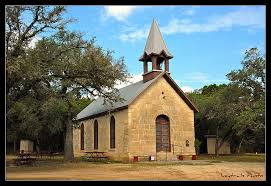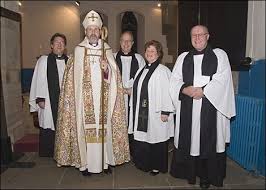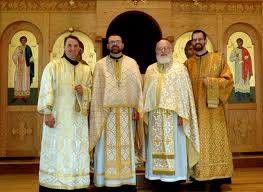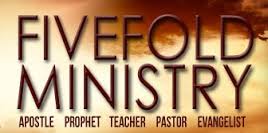 Why Should/Shouldn’t My Church Embrace Change? Part XIV
Why Should/Shouldn’t My Church Embrace Change? Part XIV
To understand the five fold, please read the entire passage of Ephesians 4:1-16.
The first three verses emphasize Christian character, which Paul qualifies as walking in “humility, in gentleness, with patience, showing tolerance for one another in love, and preserving the unity of the Spirit in the bond of peace”. Unfortunately, Christian attitudes are often judgmental rather than gentile, patient, and tolerant.
The next three verses Paul clarifies “preserving the unity of the Spirit in the bond of peace” as being “one Spirit, just as also you were called in one hope of your calling; one Lord, one faith, one baptism, one God and Father of all who is over all and through all and in all.” “Unity” and “oneness” is central to every believer and their trust in the Holy Spirit.
 In verses 12 through 16 Paul explains “Christ’s gift” of “grace” by recounting how Jesus “descended into the lower parts of the earth” conquering sin and death, then “ascending on high”, taking with Him “a host of captives,” those previous saints who had waiting for their Savior while in the Bosom of Abraham. He not only raised the dead, but “He (also) gave gifts to men. He who descended is Himself also He who ascended far above all the heavens, so that He might fill all things.”
In verses 12 through 16 Paul explains “Christ’s gift” of “grace” by recounting how Jesus “descended into the lower parts of the earth” conquering sin and death, then “ascending on high”, taking with Him “a host of captives,” those previous saints who had waiting for their Savior while in the Bosom of Abraham. He not only raised the dead, but “He (also) gave gifts to men. He who descended is Himself also He who ascended far above all the heavens, so that He might fill all things.”
What were these gifts? “ He gave some as apostles, and some as prophets, and some as evangelists, and some as pastors and teachers.” I believe these gifts are believers who want to win the lost, to see rebirth, who want to shepherd the sheep, to nurture and care for them, who want the Logos Word, the written Word to become the Rhema Word, the living word, who want to not only draw near to God by hearing his voice, feeling his heartbeat, and being obedient to that voice, and who want to see His Bride as a whole entity, a living organism, the Church! His gifts to us, the body of Christ, are the passions, desires, and points of view of an apostle, prophet, evangelist, pastors (shepherds), and teachers that can indwell any believer in Jesus Christ.
Why? “For the equipping of the saints for the work of service, to the building up of the body of Christ; until we all attain to the unity of the faith, and of the knowledge of the Son of God, to a mature man, to the measure of the stature which belongs to the fullness of Christ.” Jesus did not leave his believers on earth as orphans, but promised the gift of the Holy Spirit to guide and teach them. He also did not abandoned his believers but gave them gifts, the tools, to “equip” them for the purpose “of service” to “build up of the body of Christ,” to “attain unity in faith,” to “attain of the knowledge of the Son of God,” and “to mature man to the fullness of Christ.”
 What are the results if the Church accepts these gifts? “We are no longer to be children, tossed here and there by waves and carried about by every wind of doctrine, by the trickery of men, by craftiness in deceitful scheming.” Each of the thousands of different Christians sects have their “wind of doctrine” that defines their uniqueness. Each believes they have the elite truth of correct Biblical theology, and all others are in some kind of error. If one looks at the wide scope of Christian theology proposed by the hundreds of Christian colleges, universities, and seminaries just in the United States, one would be “tossed here and there by waves and carried about by every wind of doctrine.”
What are the results if the Church accepts these gifts? “We are no longer to be children, tossed here and there by waves and carried about by every wind of doctrine, by the trickery of men, by craftiness in deceitful scheming.” Each of the thousands of different Christians sects have their “wind of doctrine” that defines their uniqueness. Each believes they have the elite truth of correct Biblical theology, and all others are in some kind of error. If one looks at the wide scope of Christian theology proposed by the hundreds of Christian colleges, universities, and seminaries just in the United States, one would be “tossed here and there by waves and carried about by every wind of doctrine.”
We are to “speak the truth in love,” but with all this diverse theology, what is that truth? The first century Church had the Apostle’s Teaching, a simple gospel, a simple message of what they “have seen and heard”. They taught Jesus! They also warned of wolves in sheep’s clothes would come “by the trickery of men, by craftiness in deceitful scheming” and distort that truth. If there ever was a time the Church needs the “Apostle’s Teaching” it is today.
 Paul admonishes us Christians in our faith to “no longer be children, tossed here and there,” but “to grow up in all aspects into Him who is the head, even Christ.” CHURCH, it is time “to grow up”! To grow up, the church needs to embrace a spiritual metamorphosis, a transformation from structure back to relationships by which the Church was originally birthed! It needs to return to being a living organism.
Paul admonishes us Christians in our faith to “no longer be children, tossed here and there,” but “to grow up in all aspects into Him who is the head, even Christ.” CHURCH, it is time “to grow up”! To grow up, the church needs to embrace a spiritual metamorphosis, a transformation from structure back to relationships by which the Church was originally birthed! It needs to return to being a living organism.
One of the purposes of the five fold is to bring UNITY to the Body of Christ. The Church, “the whole body,” can “be fit and held together by what every joint supplies, according to the proper working of each individual part, which causes the growth of the body for the building up of itself in love.” What are those joints? They could be the Five Fold giftings, passions, desires, and points of view that are available for every believer.
There, in sixteen verses, Paul introduces and outlines five gifts, five passions that Jesus gave the Church upon his ascension into heaven to equip his Bride for His return to her! All the Church needs to be effective and united are in those five giftings and passions.
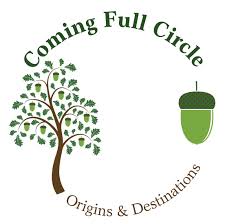 Why Should/Shouldn’t My Church Embrace Change? Part XXXXV
Why Should/Shouldn’t My Church Embrace Change? Part XXXXV The Holy Spirit of Jesus Christ has offered us the apostolic vision and point of view of seeing the big picture of a believer’s spiritual journey from spiritual birth, justification, through the process of maturing in Christ, sanctification, to the passing from this world into an eternal relationship with the Godhead, glorification. It is a journey which needs brothers and sisters in the Lord sacrificially walking beside one another as peers in Christ, a Priesthood of Believers, the Church.
The Holy Spirit of Jesus Christ has offered us the apostolic vision and point of view of seeing the big picture of a believer’s spiritual journey from spiritual birth, justification, through the process of maturing in Christ, sanctification, to the passing from this world into an eternal relationship with the Godhead, glorification. It is a journey which needs brothers and sisters in the Lord sacrificially walking beside one another as peers in Christ, a Priesthood of Believers, the Church.










